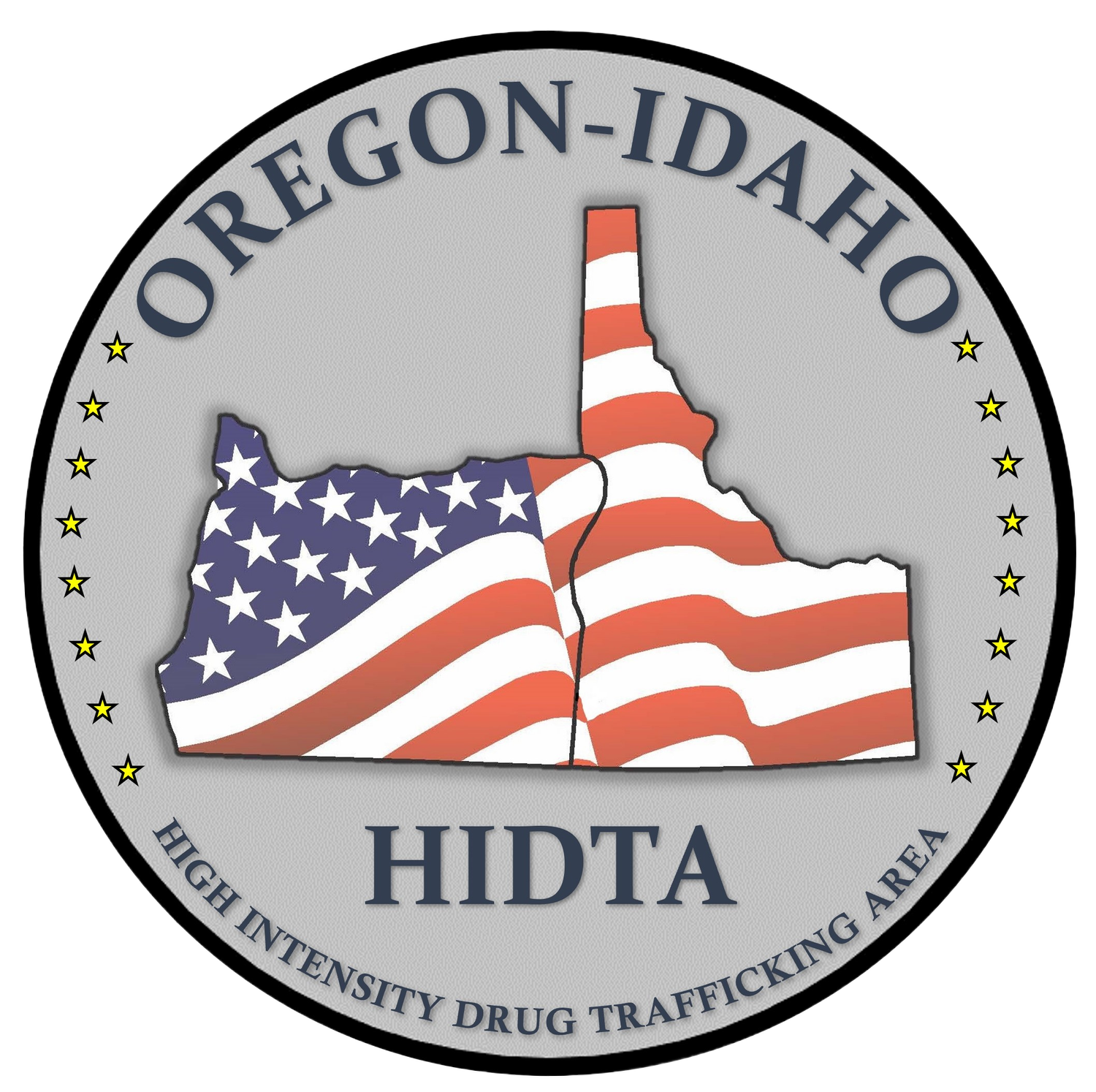Threat Assessment
The Oregon-Idaho HIDTA program publishes a threat assessment on June 15th each year. The threat assessment is an annual analysis of drug trafficking and related activities in Oregon and Idaho. The primary purpose is to provide a basis for the development of the Oregon-Idaho HIDTA program's counter-drug strategy by identifying and describing the organizations that engage in the manufacture, cultivation, importation, transportation, and/or distribution of illegal drugs or the diversion of prescription drugs in and through Oregon and Idaho.
A full-text report may be downloaded by clicking the button below.
2025 Threat Assessment Executive Summary
Communities within the Oregon and Idaho HIDTA designated counties face challenges related to the impact of illicit drug use like other counties throughout the United States. Illicitly manufactured fentanyl in powder and pill form and ever-present high-purity methamphetamine, have caused a significant increase in fatal and non-fatal overdose incidents as both drugs continue to flood the region. The Oregon-Idaho HIDTA Information Sharing and Analytical Coordination Center (ISACC) predicts with high confidence that fentanyl and methamphetamine will continue to be the region’s most significant drug threats in 2025.
The following further highlights the drug threats impacting the Oregon-Idaho HIDTA region:
Fentanyl is the primary drug threat in Oregon and Idaho, seized by law enforcement agencies in counterfeit pill, and increasingly, in powder form, as the purity has consistently increased, and prices remain low. Fentanyl was identified as the primary cause of death either alone or with other substances in 51.5% of the drug-related deaths in Idaho during 2023 and 77% of the drug-related deaths in Oregon as of September 2023.
Methamphetamine continues to impact community livability, contributing to overdose deaths and criminal activity including crimes against persons and property in the HIDTA region. Methamphetamine was identified as the cause of death either alone or with other substances in 40% of the drug-related overdose deaths in Idaho in 2023 and 68% of the drug-related deaths in Oregon as of September 2023.n.
Heroin seizure incidents by law enforcement agencies continued to decrease in 2023, likely indicating a decrease in availability, as demand for and availability of fentanyl rose among opioid-dependent users. Although heroin is still available in the HIDTA region, it is often seized in smaller amounts with other illicit drugs in poly-drug seizures.
Cocaine availability remains consistent in the region based on the number of seizure instances of cocaine and cocaine-related drug trafficking organizations (DTOs) investigations conducted by HIDTA enforcement initiatives in Oregon and Idaho. The region remains a transit area for cocaine destined for Washington and Canada.
Oregon remains a source state for high-potency marijuana and extract products for the nation. Despite state efforts to regulate the legalized marijuana market, black and grey market products manufactured in Oregon continue to be seized throughout the country, negatively affecting communities outside of this HIDTA region and undermining the legal markets in many other states. Mexican national-led DTOs continue to impact illicit marijuana cultivation in Oregon. Environmental degradation and forced labor trafficking remain a concern to law enforcement and elected leaders throughout the state.
Illicit use and availability of diverted controlled prescription drugs (CPD) and designer drugs, such as dimethyltryptamine (DMT) and 3,4-methylenedioxymethamphetamine (MDMA) remains low in Oregon and Idaho and are not considered a significant threat based on law enforcement and public health reporting.
DTOs operating in Oregon and Idaho remain robust, with an average of 125 unique organizations investigated yearly. Multi-state DTOs continue to have the largest impact followed by locally operated and internationally connected DTOs. International DTOs are traditionally linked to transnational criminal organizations (TCOs) in Mexico and are responsible for sourcing fentanyl, methamphetamine, heroin, and cocaine. TCOs connected to China have increased their presence in large-scale marijuana cultivation and domestic export from Oregon over the past few years.
DTOs and money laundering organizations (MLOs) in the region use bulk cash smuggling as the primary method for transporting illicit proceeds from the local area to TCOs operating in drug-source countries. Cash-intense businesses, such as retail stores, restaurants, and used car dealerships are often used as the primary methods to transfer drug proceeds into legitimate funding streams. Traffickers in the region are more commonly using money service businesses (MSB) to facilitate the transfer of drug profits and payments for drug shipments from this region to source countries and those countries of familial origin..
Xylazine continues to be identified in Oregon and Idaho, often comingled in the illicit fentanyl drug supply. Xylazine has been detected in counterfeit pills and powder fentanyl but in a low percentage of drug seizure samples tested at state or federal laboratories. While xylazine is not currently a controlled substance, combining it with fentanyl exacerbates the life-saving measures associated with naloxone administration used to reverse opioid overdoses.
The number of firearms seized during drug investigations by Oregon-Idaho HIDTA initiatives has increased over the past five years in the region. Investigators surveyed reported an increase in encounters with drug traffickers who are armed with firearms. Those firearms are often possessed for personal protection or as a form of payment received for drugs. The continual presence of firearms among drug traffickers will create an increased risk to law enforcement officers during suspect encounters and potentially impact local communities with the possibility of increased shooting incidents.
